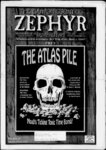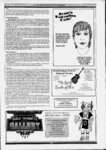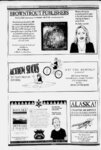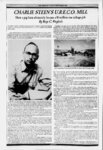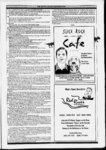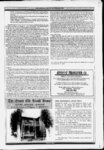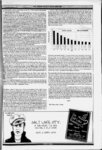| OCR Text |
Show XvftvXsvl'XwW-X-ivivi'ivXi- Test well TP09 shows a level of 953 ugL in the center of that "spade just below the pile, while the level is 38.4 ugL at TP10 at the tip of the "spade" near the river bank.. Sulfate is present in concentrations exceeding 12,000 mgLIter extending from the tailings to the Colorado River. Uranium (largely as uranyl carbonate ion) is 6.76 mgL at TP09 and 168 mgL at TP10. The highest concentration is found at the old "catch pit" area where the nitric add used to regenerate resin was dumped. Total discharge rates were calculated to be 6.7 gpm to explain the uranium, 66.3 gpm to explain the sulfate, and 20.9 gpm to explain the ammonia. Tlie ammonia figure is thought to be low because part of the ammonia is being lost to nitrate. Oak Ridge calculated the tailings is receiving 3.7 gpm recharge from predpitation over time. With a residual moisture level of 037, there are 426 million gallons of drainable water in the tailings. This would require 270 yean to drain the pile; in fact, the drainage rate is more rapid in the first yean so the decline will be logarithmic, not linear. The hydrology model for the tailings indicates a level of 2.8 mgLiter of uranium in groundwater downgndient of the tailings pile will persist "indefinitely." The bulk of the contamination is within 40 feet of alluvium ("red sand") under the tailings pile. At 55 feet under the pile, there is a layer of fine grain sand which isolates the shallow from the deeper acquifer. Thus, the tailings leachate goes sideways towards the Colorado, carried by groundwater flow, instead of penetrating deeper under the pile. The "mass flux" per day discharging into the Colorado River is estimated to be 283 gramsday of Uranium, 290 gramsday of Molybdenum, 150,000 gramsday of ammonia, and 11,000,000 grams per day of sulfate. Tailings Pile Seepage Model: The Atlas Corporation Moab Mill, Moab, Utah dated January 9, 1998, was prepared for the Uix Nuclear Regulatory Commission by the Oak Ridge National Laboratory Environmental Technology Section. This particular study was commissioned and paid for by the NRC for the specific purpose of modeling what effect on groundwater discharge from the tailings installing the day cap would have. The answer was: none whatsoever. On page 11, Oak Ridge states that the moisture content of the tailings is 0.63 at the top of the pile, 0.75 at the bottom, and 0.71 overall The recharge rate of rainwater into the tailings through the clay cap would match the rate of infiltration of water through the upper tailings. In the words of the report, the "unsaturated hydraulic conductivity" of the fine tailings at the top of the pile are "suffident to conduct the total volume of recharge through the pile." Thus, water infiltration through the clay cap would be suffident to maintain the 3.7 gpm discharge rate of leachate as long as the tailings pile exists (page 13). i easy to understand or predict the cumulative effect of 270 years worth of 300 grams per day of this and 150,000 grams per day of that, in combination with mass flux from less controllable sources. In the reports going back and forth, I have read citations of studies showing that the levels of pollution coming from the Atlas tailings are higher than those which have been demonstrated to cause health problems in fish and other acquatic creatures. Toxins bioaccumulate in the food chain of a river environment Toxins concentrate and undergo chemical reaction in river and lake sediments. Our cumulative experience with pollutants dictates erring on the side of caution. If you examine the toxicological history of almost any chemical or heavy metal, you find that its toxicity, interactive and cumulative effects were underestimated -- often over and over. The DOE concluded that piles much less toxic than the Adas pile needed to be moved, and Congress agreed and appropriated the money to do it We either need to have a lynching party for the DOE and NRC for wasting taxpayer money moving piles for no good environmental and health reason; or conclude that what was done with the leaky Tide I piles was prudent, and we should figure out a way to do likewise with the Atlas tailings. Costs and Recourses When considering this, also recall that the Grand County Atlas Mill Tailings Reclamation Task Force has worked out a detailed plan for moving the Adas tailings to Klondike Flats for $23-3-5 million, which overlaps with the cost range of $17-2-6 million estimated by Atlas's engineering consultant for capping (both figures represent the 5th and 95th ile probability of cost for executing a plan). Both the state and DOE have stated they suspect, based on the cost of other capping projects, the actual total cost of Adas capping and groundwater remediation to be around $67 million. Also recall that any reclamation costing more than $14.8 million will require additional equity from Atlas for their 44 share of cost. Where Atlas would come up with the money is in doubt; the company lists $21,935,000 as the new total capping cost as of 1998, but has not posted $3,151,400 additional bond as requested by the NRG Adas has arranged to sell all their domestic gold and perlite properties; their only mining and milling activity is lead, zinc and silver in Bolivia; as of 31 December 1997 total stockholders equity in Adas was $531,000 and total company asset book value exeeded liabilities by only $12,496,000. In the long run, I can see no outcome except that the Atlas uranium tailings will be moved at public expense. The question is: how can we extract ourselves from the bureaucratic tar baby and honestly ' reclaim the tailings cost effectively? Lance Christie has lived in Moab for more than 13 years and is affiliated with the Association for the free of Life. So What? We asked the Department of Energy folks who did the reclamation of the Title I tailings piles which were moved because of groundwater contamination how the Atlas leachate figures compare to the moved piles. The Atlas pile is leaching at a rate 15 times worse than the worst Title I pile that was moved, and 100 times worse than the least problematic pile that was moved. It is useful to note that every 195ffs-er-a unlined Title I pile sitting on a river bank and talking into groundwater was mooed in order to "reclaim it. None of these piles was leaching as badly unlined pile sitting on a river bank and leaking into as the Atlas pile, which is a 1950's-er- a that Atlas is classified as a Title II tailings pile. If the difference Tlie is only groundwater. Atlas pile had been classified Tide I, it would assuredly not be there any more. It would have been moved to Klondike Flats by the DOE If the pile is capped and given to DOE it will probably still end up being moved at taxpayer expense to Klondike Flats because of the groundwater and surface water problems. Since the cap makes no difference whatever -you cannot differentiate "no action" and "capping" alternatives environmentally - why spend 55 taxpayer money capping the pile and then again 100 moving both the pile and the additional volume of the cap? Is the Atlas leaching an actual, significant environmental problem? When dealing with cumulative impacts. It is easy to environmental toxins, one is dealing with long-terunderstand the harm done by a pulp mill spill that kills every fish in a river for thirty miles, turns the water black, and produces a stench that would gag a vulture. It is not so non-pro- fit ATOMIC TRANSFER 60. . VEHICLE SHUTTLE SERVICE Are you planning a river trip or mountain bike ride in MOAB or the CANYONLANDSAREA? SAVE YOUR VACATION TIME. take care of your vehicle shuttle. Spend your time on the river or bike trails NOT on the highway. Let ATOMIC TRANSFER Moab's only bonded vehicle shuttle service: CARL ANDERSON (435) CHRIS KAUHI 259-70- 62 Check out our internet site ah http:www.moaboanyonlands.comatomicatomic.htm or us too at: atomicOmoab-canyonlands.co- m, e-ma-il m ONE HUNDRED.. JLUS TWO. .V.Y.'.Vi'AA'.V.v; feA1 O 4 toe ,J n 0 mmtNTift X: ylEJ oBBBBUa Kir Exceptional cuisine is a very important factor in the equation of Fine Dining, but there's so much more. Atmosphere, presentation and service are vital in the creation of the experience. From the moment you are greeted at THE GRAND OLD RANCH HOUSE, it will be evident that your hosts, Glenn & Katie Victor, have had plenty of practice. After almost a decade of owning and operating three eating establishments in Moab, they shed the burden of two a few years ago, to concentrate their efforts on one, and in so doing, they have created one of the finest dining opportunities to be found anywhere. A plentiful, but select choice of International menu items, set in a painstakingly restored old home with food prepared and served by individuals whose greatest reward comes with your pleasure. The Grand Old Ranch House is 102 years old. Join us for an unforgettable evening that you'll wish could go on forever. ; And Glenn says: "We're still uniting North Dakota. to serve someone from |
